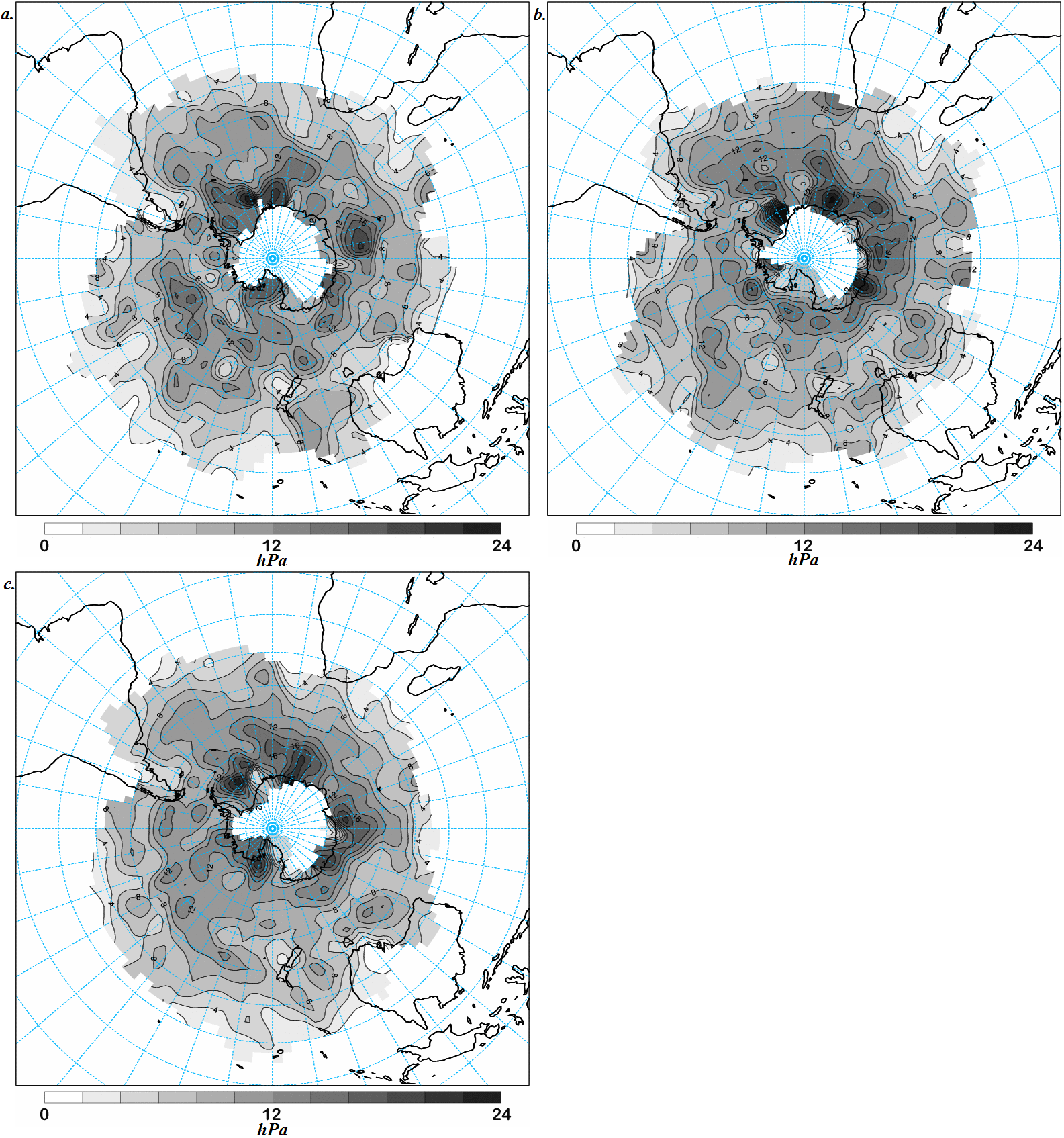
Allen Research Group
Hail - Tornadoes - Climate Variability - Extremes
Past Research Projects
Project: Global Climatology of Explosive Cyclogenesis (Unfunded)
Project Details
What is an 'explosive cyclone'? These rapidly developing extratropical (or transitioning tropical systems) systems leverage a mixture of latent heat, baroclinic and convective processes to go from relatively weak depressions, to some of the deepest low pressure areas outside of the tropics, resulting in winds of hurricane force (and sting jets), storm surges and heavy rainfall. Common areas for their formation are along the baroclinic gradients associated with continental coastal currents - examples in the Northern Hemisphere being the Kuroshio and Gulf Streams, and in the Southern Hemisphere off the Brazillian/Argentinian coast and Australia's east coast, leading to extensive risks to shipping. Typically, we identify these systems using the concept of rapid deepening, where the central pressure decreases at a certain rate relative to the systems latitude - at 60 degrees of latitude, this corresponds to 24hPa deepening over 24 hours, but at lower latitudes smaller deepening has a similar result. In Allen et al. (2010), I explored existing definitions and an alternative approach to filter incorrectly detected systems, combined with cyclone tracking in deriving a global climatology of explosive cyclogenesis. Unlike studies before this, I used tracking output from 5 different reanalyses (3 shown here) to explore the differences and whether resolution was important. The results of this study show the preferred formative regions for both hemisphere, and the importance and efficacy of higher resolution for the detection of these systems, while the NCEP2 reanalysis is a really poor choice for looking at cyclones (and other things) in the Southern Hemisphere, due to large trends from assimilation changes. Perhaps my favorite paragraph in this paper is the last, which points to the necessary approach for future use of reanalysis data: "Finally, we note that while statistical differences between the reanalyses may pose a significant influence to climatologies of cyclones and explosive cyclones, the use of multiple reanalyses, particularly high-resolution datasets such as the ERA-Interim remains a powerful tool for data-sparse regions. Acknowledging the limitations in the use of reanalysis data allows a greater understanding of midlatitude development, which is particularly important in the SH where reanalysis data has improved significantly in quality, but must improve further to achieve the consistency and reliability found in the NH."


Left: System density of combined cyclones (explosive intensification section only) for the SH, as derived from the tracks of the (a) NCEP2 reanalysis over the period 1979–2008 (883 tracks), (b) JRA-25 reanalysis over the period 1979–2008 (858 tracks), and (c) ERA-Interim over the period 1989–2008 (703 tracks). System density is weighted by the length of the respective periods [10 958 days for (a) and (b); 7305 days for (c)]. Contours are 10−5 cyclone systems per degrees latitude squared. Right: As for the SH, except system density for the NH.



